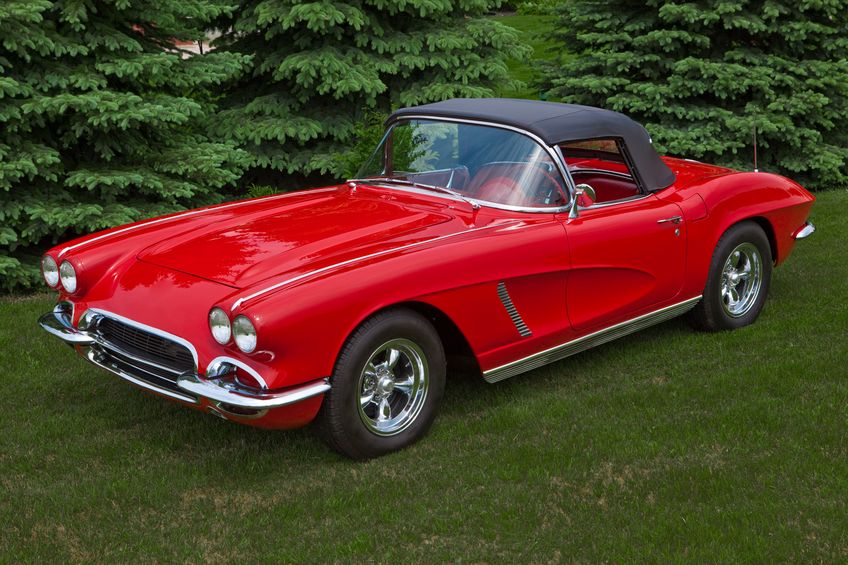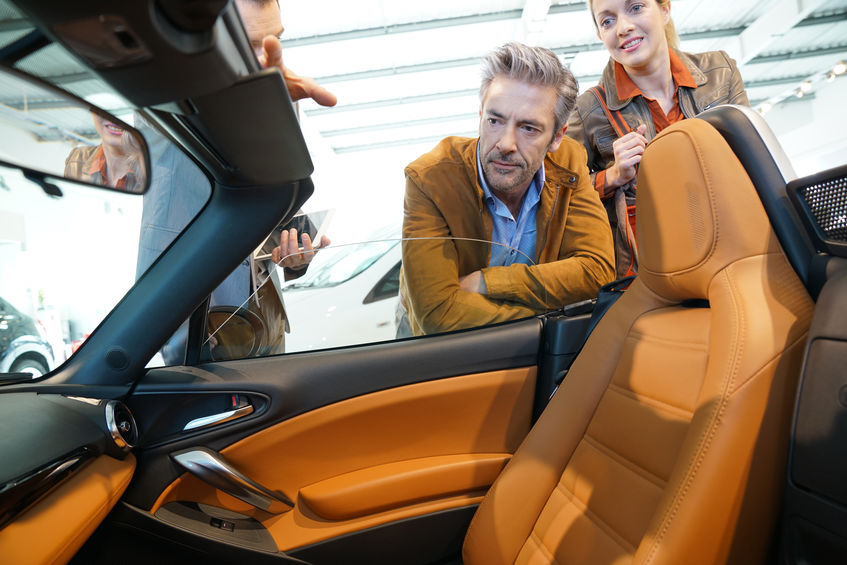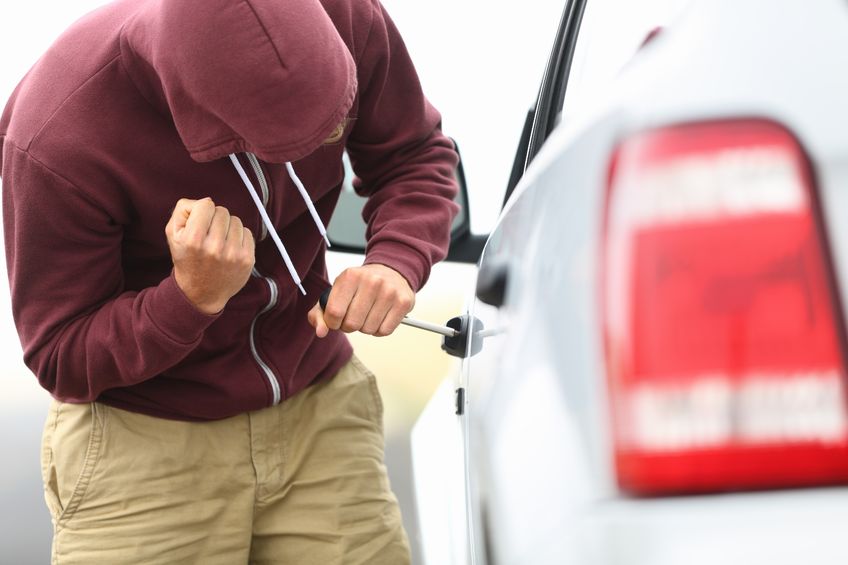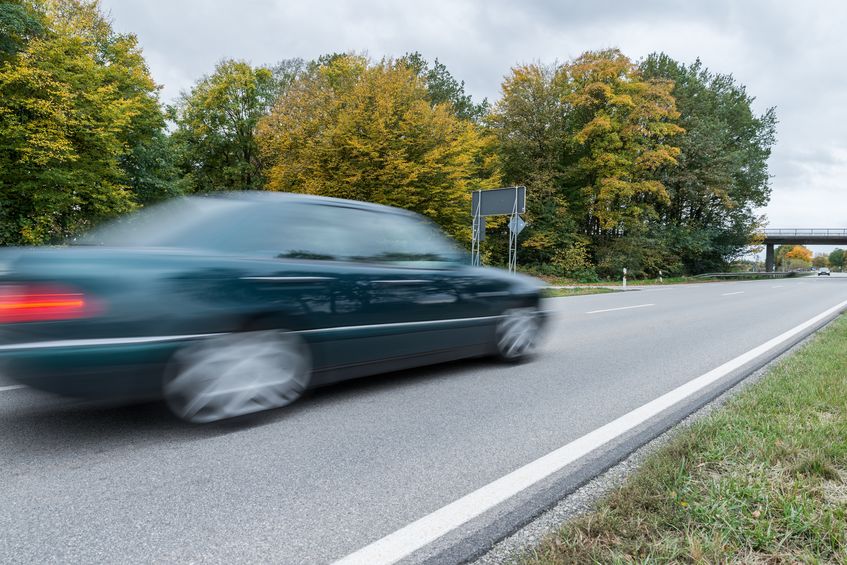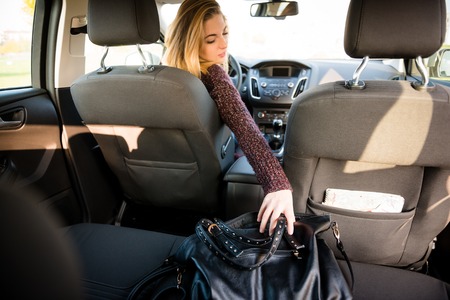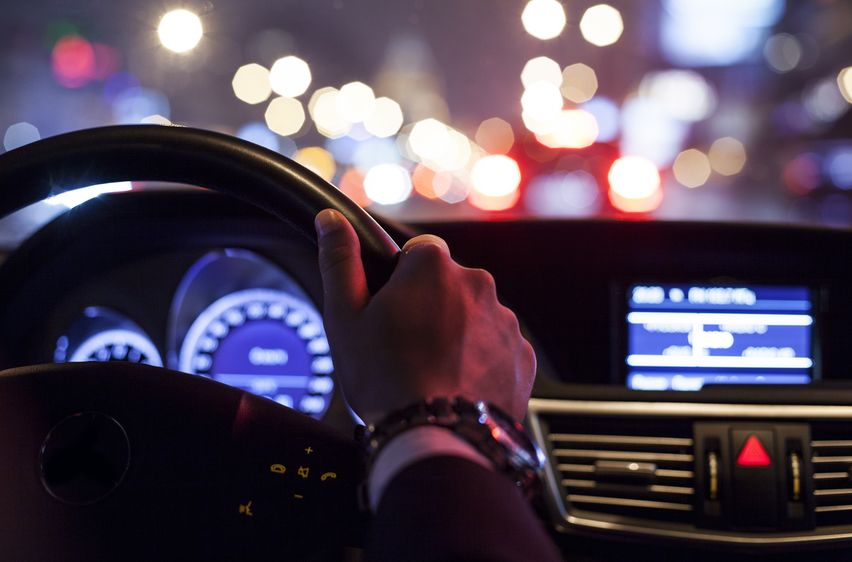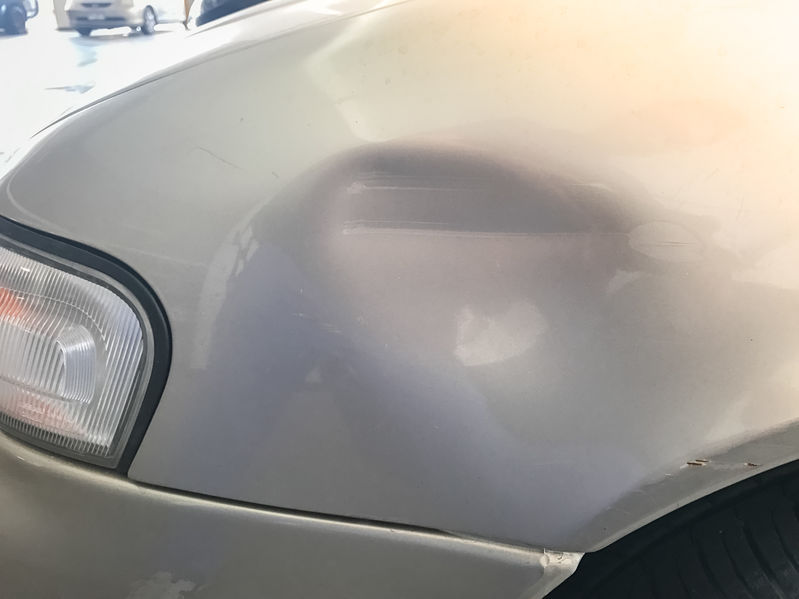There’s just something appealing about a classic car. Perhaps it’s the beauty or that it’s rare. Maybe it’s the engineering or history. It could be the memory of one owned in the past or what it represents. Here are some posts about classic cars that you may find interesting.
Classic Cars: Do You Own a Classic Car of the Future?
For some people, nothing compares to driving a classic car of the golden age of autos. Whether you have a vintage racer like a 1963 Aston Martin or something a bit more rugged like a 1969 Dodge Charger, the feeling of taking it out on the road is indescribable.
Unfortunately, as we go deeper into the modern age, finding these antique rides is only going to be more and more difficult. However, that doesn’t mean that you can’t find yourself in a classic vehicle.
Think about it like this – when people were driving their cars in the 1950s and 60s, they didn’t realize how much they would be worth in 40 years. So, imagine how much your current car may be valued in another 40 or 50 years.
But how can you know which make and model will be revered as a classic? Thankfully, according to the experts at CNET’s Car Tech Magazine, these 10 autos will probably be fetching high prices in the future.
- ‘03-06 Infiniti G35
- ‘97-03 Toyota Prius (1st Generation)
- ‘08-09 Pontiac G8
- ‘99-06 Honda Insight (1st Generation)
- ‘04-06 Scion xB
- ‘99-07 Toyota MR2 Spyder
- ‘00-09 Honda S2000
- ‘04-08 Dodge Magnum
- ‘05-11 Chrysler 300C
Even if you don’t currently own any of these cars, they are much more affordable now than when they receive their “antique” status. Also, if you pay attention to what makes these vehicles so desirable, you can figure out which new model will become a classic someday. Typically speaking, look for any design or trim that has a limited run, or any car that gets discontinued. The harder it is to find and the higher quality it is, the better it will age.
Also, consider getting insurance for your soon-to-be vintage ride. Contact Bob Johnson Insurance today to get a free quote! We also cover current antique vehicles, so be sure to see what rates we can offer you.
Classic Cars: Have Fun at a Classic Car Show
If you’ve ever been to a classic car show, then you know that it can be an exciting experience. Getting to see such beautiful and elegant vintage cars is always a treat, but the show itself can be a bit overwhelming, especially if you don’t know what to expect.
Follow these tips and tricks, and you’ll come away with positive memories, not negative experiences.
Bring the Family
Classic cars appeal to everyone, not just collectors. Most of these shows are in public venues, making them a fun way to spend the day with your family. Also, having kids in tow can help add to the excitement as they thrill over the classic models on display.
Plan an Itinerary
While these events can be enjoyable without any set schedule, it’s best to have something in place before you go. You can always make adjustments on the fly, but creating an itinerary will help you make the most of the show. For example, if some exhibits or showcases happen at certain times, you can be sure to catch all of the ones you want without missing anything.
Be Early
Whether it’s the show itself or a particular exhibit, showing up early will alleviate a lot of the stress that can occur. Not only will you not have to wait in line for as long, but you can pack more into the day because you’re not running against the clock.
Be Prepared
Some of these shows can be quite massive. That means a lot of walking. If you’re not up for that, you won’t enjoy the experience as much. In addition to being ready for the physical aspect, be sure to consider pit stops and hydration along the way. Bring a bag with snacks and drinks (and sunscreen) so that you’re ready for anything.
When the next classic car show comes to town, you’ll be ready to enjoy it in all its splendor. Being prepared will ensure that you’re always ready for whatever happens.
Related Posts
Choosing the Right Convertible
For some people, the only way to drive is with the top down. While many drivers out there are fine with standard vehicles, you know that the thrill of having a convertible is too much to ignore.
But how can you be sure that you’re picking the right model? Before you make a final decision, you’ll want to consider these factors. At Bob Johnson Insurance, we understand the appeal of an elegant convertible, which is why we’re here to help.
Safety Features
No matter what kind of car you drive, you want to feel safe when you’re on the road. However, convertibles have some extra precautions you’ll want to take since the top half of the vehicle is missing. Some essential elements to consider are:
- Roll Bars – these bars help protect any passengers in case the car flips over.
- Airbags – side impact bags are going to be more critical in a convertible, so make sure your model has them.
- Rearview Camera – although a convertible offers more visibility for the driver, it may not be enough. Eliminate blind spots with these cameras.
Hard vs. Soft Top
When picking out the right convertible, one of the most crucial elements will be the top. For the most part, drivers prefer having a soft top that comes with an automatic folding system. However, if you’re driving something with a little more panache, a hardtop may be more preferable. Let’s look at the pros and cons of each.
Hardtop Convertibles
These models will resist wear and tear much better, and they will avoid leaks in the rain. However, they can be cumbersome to attach, and you may not be able to bring it along. In that case, you can risk damaging the inside of your car if the weather gets foul.
Soft Top Convertibles
For the most part, these units are much more convenient, especially if you’re worried about the weather. However, they can get damaged easily, so keep that in mind.
Other Considerations
If you’re new to the world of convertibles, then you may not be aware of all of the various elements that come with your new ride. Here are some additional factors to think about.
Wind Noise – It will be much louder with the top down which can interfere with conversation and music while you’re speeding down the highway.
Wind Damage – Not only will your hair fly around, but the wind can catch other items in your car and send them flying. Be sure to secure items in the car.
Putting Top Up/Down – It can be a process to convert your car, so make sure that you’re prepared to do this whenever necessary.
Security – You can’t leave valuables in your car when the top’s down, so make sure that you don’t fall victim to theft. Also, your car can be stolen much easier if the car is unattended and the top is down, so plan for that as well.
Trunk Space – The top can take up much of the storage on your vehicle, so be aware of that.
Climate Control – A/C and heating are useless when you’re exposed to the elements. Some new models have heated seats to alleviate this issue, but it can still be a problem for some.
Overall, if you’re committed to the convertible life, then you can prepare yourself for anything. Contact Bob Johnson Insurance to make sure that your new ride is covered, and enjoy the road as it was meant to be.
Five Mistakes That Get Your Car Stolen
Your car is one of the most valuable things you own. The value not only comes from the money you put into it, but it refers to the fact that you need it all the time to get around. Thus, having your vehicle stolen can be a significant problem. Unfortunately, many people make mistakes that allow their cars to fall into the wrong hands – don’t be one of them.
Here are some common slip-ups that you may be making without realizing it. Change these behaviors, and you can decrease the risk of theft.
Leaving Your Car Running
Whether you like to warm up your vehicle before you start driving (which is almost always unnecessary), or you decide to pop in somewhere without turning it off, this makes your car a prime target for thieves. Most of the work is done for them, so you’re essentially creating a golden opportunity.
Keeping Spare Keys In the Car
On paper, this sounds like a good idea. If you ever need to let someone else drive (i.e., a valet or a friend), it’s better to give them a spare than to use your copy. However, if a thief gets into your vehicle, nothing is stopping him or her from driving off. Without a key, it may be too complicated to get the motor running, but a spare can turn a simple break-in to grand theft auto.
Having Valuables Inside
Chances are that you’re not keeping gold bars in the back seat, but plenty of other valuables can cause problems. For example, having a laptop or other electronics in plain view may be tempting for thieves as well as smaller devices like cell phones or tablets. Be sure to keep all of these out of sight (i.e., in the trunk) or take them with you.
Leaving a Window Open
Yes, it can help your car stay cool when the weather’s hot, but it also allows carjackers access to the inside. Even a small crack is more than enough to open the door, which simply makes it easier for them to get in.
Assuming It’s a Safe Neighborhood
No matter where you live, your car can get stolen. All it takes is an opportunity too rich to pass up, and someone can make off with your vehicle. Complacency is going to cost you in the long run, so be sure to always keep your car safe and sound.
Don’t become a statistic. Be smart and protect your vehicle. Avoid these mistakes, and you’ll be in a much better position. Contact us today to get the coverage you need, including theft protection, just in case.
Save Money by Slowing Down
One issue that plagues most drivers is speed. Although we have speed limits everywhere you go, the vast majority of drivers exceed these limits, sometimes significantly. However, just because many people do it doesn’t mean that it’s the right thing to do.
Today we want to cover some of the primary benefits of slowing down and how it can help keep you and your car safe.
Speeding Statistics
Although cars are always becoming safer, they’re still massive machines of metal and glass that can kill a person with enough force. Unfortunately, there has been a recent uptick in traffic fatalities,(1) and according to the National Transportation Safety Board, speeding is a prevalent cause.(2)
In fact, about 31% of all fatalities were caused by speeding, a figure that’s pretty close to drunk driving. This problem is so prevalent that about one in every six drivers on the road is pulled over for going too fast. Overall, about 41 million speeding tickets are issued every year in the US.
Save Money by Slowing Down
Obviously, the dangers present in speeding are widespread, but most people believe that they can react in time to avoid a collision. However, if you think about the financial costs of speeding, you may feel differently next time you’re behind the wheel. Here’s how putting the pedal to the metal can cost you.
Speeding Tickets
Depending on where you live, a ticket can be several hundred dollars. Remember, you have a one in six chance of being pulled over, so is it worth the risk? Just a couple of tickets in a year can set you back substantially.
Insurance Rates
Insurance companies want to minimize their risk of paying a claim. While they can’t always monitor your driving habits, they can look at things like moving violations and speeding tickets. The more of these you have, the higher your rates will be.
One thing that companies consider as well is how much you were going over the speed limit. For example, getting pulled over for going 40 in a 35 is not as bad as going 65 in the same zone. Higher speeds can mean bigger tickets, as well as more substantial penalties.
Overall, going fast is not worth the risk. Not only are you putting yourself in danger, but you could be hurting your wallet too. Slow down, and you’ll avoid many of these risks.
Avoid Deadly Distractions Behind the Wheel
Many people have a limited definition of “distracted driving”: They think it only means texting behind the wheel.
There’s good reason for that, because texting requires visual, manual and cognitive attention – the same attention required for safe driving. But although texting is perhaps the most dangerous distraction, there are many others that can impact how you drive, whether you realize it or not. And they can be just as deadly.
How deadly? According to the National Highway Traffic Safety Administration and U.S. Department of Transportation, in 2015 more than 390,000 people were injured in crashes caused by distracted drivers – with more than 3,200 killed. (Distracted Driving 2016 stats: https://crashstats.nhtsa.dot.gov/Api/Public/ViewPublication/812517)
Here are just a few of the things that can distract drivers on the road:
- Talking on the phone, even with a hands-free device.
- Eating or drinking.
- Talking to passengers.
- Grooming (yes, there really are people who apply makeup or shave on their way to work).
- Reading, including maps.
- Adjusting the stereo.
Younger drivers are the most distracted of all – according to the government’s distraction.gov website, people in their 20s make up 38% of drivers who were using cell phones before a fatal crash, and 10% of teen drivers involved in fatal crashes were distracted, too.
With distractions more prevalent than ever (more than 150 billion text messages are sent in the U.S. every month), how can you, and those you love, be safer behind the wheel? Here are a few tips:
Don’t use the phone: This includes texting as well as talking, unless it’s an emergency. Even hands-free conversations can take your attention off the road.
Eat before you leave, or after you get there: Scarfing down that burger with one hand on the wheel means your focus is divided – and you probably don’t have as much control over your car as you should. Bonus benefit: Keeping your meals and your driving separate means you’re much less likely to get ketchup on your pants.
Know where you’re going: Nobody likes to be lost. But messing around with your car’s GPS (or the maps app on your smartphone) while you’re moving can lead to something you’ll hate even more – an accident.
Talk to your family about safe driving: Having a conversation with your spouse as they’re driving home? That’s a perfect opportunity to say, “I’ll let you focus on the road; we can talk when you get here.” And if you have young drivers in the household, be sure to have a conversation about their phones and other potential issues, such as their passengers – a key distraction for teens.
Watch for other distracted drivers: Just because you aren’t distracted doesn’t mean that other drivers are focused on safe driving. Stay in control and be vigilant – you’ll be ready to react when someone else makes the wrong move.
Distracted driving isn’t just “one of those things” that happens, like a tire blowout or mechanical failure that isn’t anyone’s fault. It’s 100% preventable – and by committing to avoiding distractions while you drive, you’ll help make the road safer for everyone.
Dangers When Driving at Night
Although most of us drive after the sun goes down, we usually don’t realize how dangerous it can be to do so. At night, you have to be extra cautious because you may run into problems that wouldn’t be present during the day. In fact, more than 50% of all accident fatalities happen between 6 p.m. and 6 a.m., showing that nighttime can be dangerous for everyone.
So, to help you stay safe, we want to cover some of the most significant issues you may encounter out on the road.
Some of the More Significant Nighttime Driving Issues
Decreased Visibility
Even if you drive in the city, you’re not going to get as much light at night. Not only that, but your eyes work differently in the dark, meaning that you’re already at a disadvantage when you get behind the wheel.
What’s the result? You may not notice obstacles in your way, especially when turning and merging into traffic. It’s much easier to get into a collision when you can’t see anything.
Overdriving Your Headlights
If you haven’t heard this term before, it means that you’re driving too fast to react to anything that shows up in your headlights. Most drivers create this problem without knowing it. In short, by the time you see anything, it’s too late. You’ll either hit what’s in front of you, or you’ll swerve violently to avoid it, which will likely cause you to hit something else.
How do you avoid this situation? Drive slower to give yourself more time to react.
Impaired Judgement
There are many reasons for impaired driving judgment after sunset. Nighttime is when most people go out and celebrate. Staying out late with friends increases the chance of driving while tired. In addition, when traffic is less abundant, people can tend to get a little more relaxed and a little less cautious.
Even if that doesn’t sound like you, consider that you’re not the only car on the road. Be sure to drive defensively.
Suggestions to Stay Safe
Increase Your Visibility
Keep your headlights in good condition. Most older cars have lights that don’t provide as much illumination. This means that overdriving can be more of an issue. Replace dim bulbs. Also, keep your headlights clean.
Give yourself extra time when turning and merging to make sure that no other vehicles are in the space where you are going.
Use Good Judgment by Knowing When Yours Isn’t
Avoid driving when your judgment may be impaired. Whether you are tired or for any other reason, let a friend drive you home or call an Uber.
Be Aware of the Road and Other Drivers
Stay vigilant. As we mentioned, a lot of people lower their guard at night when there are fewer cars on the road. Don’t be one of them.
Night driving doesn’t have to be dangerous. As long as you’re aware of the issues that come with it and you’re prepared, you should be fine. However, if something happens, you’ll be glad that you have the correct coverage for the situation. Give us a call at 800-624-3339 or click here to contact us. It only take a few minutes to review your coverage and make sure it matches what you need.
4 Ways to Avoid Parking Lot Fender Benders
Christmas is done for this year, and, for some of us, it’s time to return the ugly sweaters, odd-looking socks and other gifts that don’t quite fit what we are looking for. Often, we tend to take the parking lot for granted. While we may be cautious and careful on the road, we may drive a little bit more recklessly when we are trying to find the perfect spot.
So, it’s not too surprising to know that many minor collisions and accidents happen when we’re not paying attention, which can be a lot of times when we’re in a parking lot. Thus, with that in mind, we want to share some ways that you can avoid getting into a fender bender.
Be Aware of Your Surroundings
One of the primary reasons why the parking lot can be such a hazardous place is that objects can be all around us. People walking behind the car, shopping carts in our blind spots – there are many more things to pay attention to than when you’re on the road.
The best way to stay aware of what’s happening in your vicinity is to use your eyes and your mirrors. Be sure to turn around and look in the direction you’re moving, especially when backing up. Even if you have a rearview camera, it may not provide the complete picture.
Slow Down
While it may be obvious on the surface, too many people will try to zip through a parking lot, especially if it’s not too crowded. However, because there are so many hazards (see above), this can be a dangerous move. Yes, you may be in a rush, but that’s no reason to drive recklessly.
Increase Space
One of the most common dangers in a parking lot is people walking. Because we’re not used to following pedestrians on the road, it can feel a lot slower than average. Still, now’s not the time to tailgate. You don’t know what they’re going to do, and they don’t have a blinker to inform you of their next move. Simply put, give them some space.
Be Respectful
Finally, you want to make sure that you’re giving the same respect to other people in the parking lot as you would expect from them. Avoid the road rage, even if someone did steal your spot. Think about it like this – what’s the worst thing that could happen? You may have to walk a little further? That’s no reason to make the parking lot more hazardous than it should be.
At Bob Johnson Insurance, we want you and those around you to be safe. These tips (above) will help. However, sometimes parking lot fender benders happen. Having the right insurance coverage is important. Give us a call at 800-624-3339 or click here to contact us. We are glad to help.
3 Ways to Reduce Car Crash Risk
If you’ve been driving for a long time, then odds are that you’ve gotten into some sort of collision. Unfortunately, with so many people on the road and so many distractions, it’s inevitable that you may get involved in a fender bender (or worse).
However, just because the odds are not on your side doesn’t mean that you have to resign yourself to getting into a crash. Today we want to go over some simple methods that can help you stay safe on the road. The safer we are, the fewer collisions there will be, and everyone wins.
Avoid Cell Phones
According to the National Highway Traffic Safety Administration (NHTSA), about 660,000 people are on their mobile devices while driving. That’s an astonishing number, and it can present a lot of dangerous situations out there. You don’t want to be a part of that statistic, nor do you want to be part of the 1.6 million crashes caused by cell phones each year.
Drive Defensively
Over 10,000 people die each year from drunk driving. Even if you were not drinking, other drivers may have been. Pay attention to what other drivers are doing and be more vigilant late at night, especially during holidays.
Slow Down
For many people, speed limits seem like an easy way for cops to pull you over and give you a citation. However, there’s a reason that they’re in place. Like drunk driving, over 10,000 people die from crashes caused by speeding motorists, so you want to avoid becoming one of them.
The dangers of speeding are exacerbated in times of low-visibility, so be sure to slow down when it’s raining or dark out. You can’t always rely on other people to be using their headlights, nor can you see pedestrians until it’s too late.
Overall, be smart and cautious behind the wheel, and you can make each drive a lot safer. Remember, it only takes one time to change your life, so pay attention.
Make Sure You Have Enough Coverage
While insurance coverage won’t reduce the risk of a car crash, having the right coverage and enough of it is important in case you find yourself in a fender bender or worse. Checking your coverage (as well as your potential discounts) only take a phone call or email. Give us a call at 800-624-3339 or click here to contact us.

